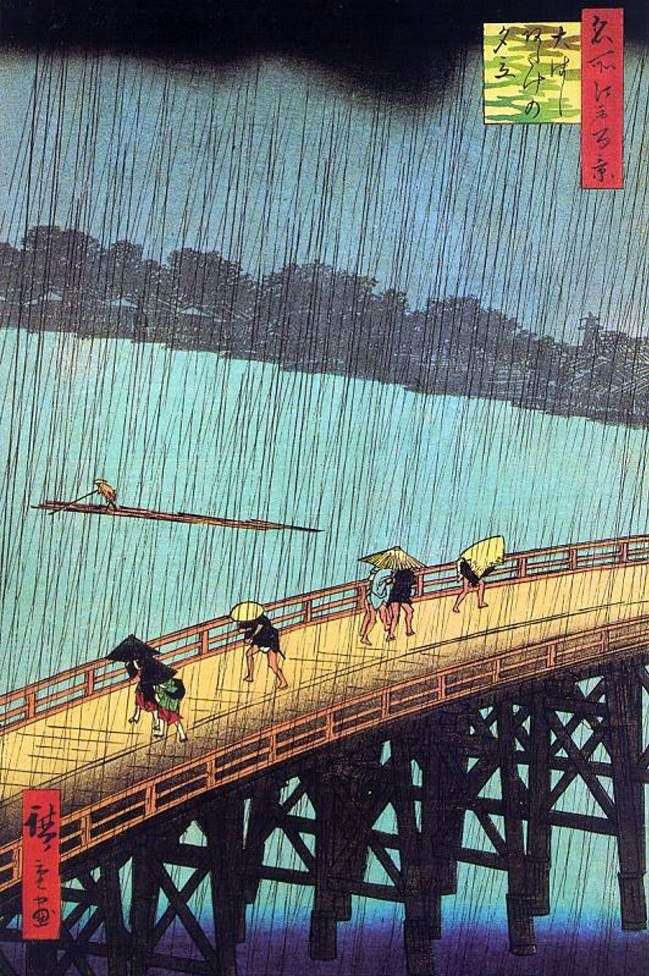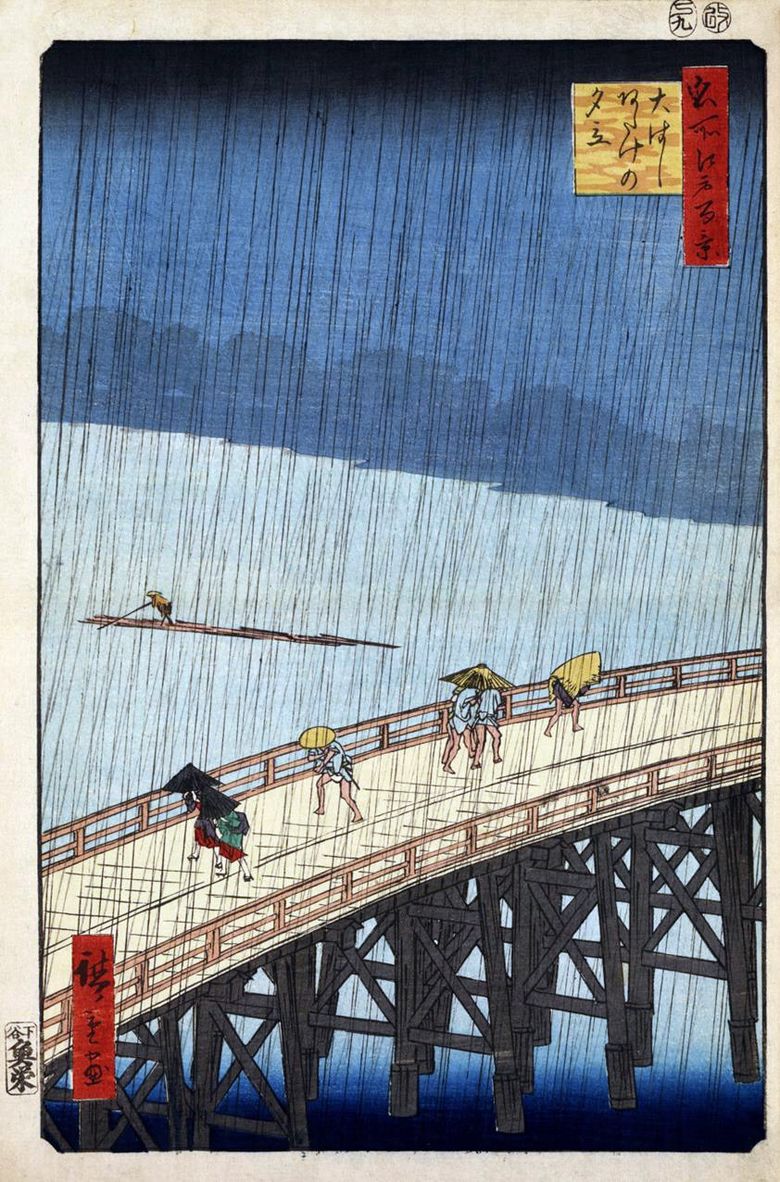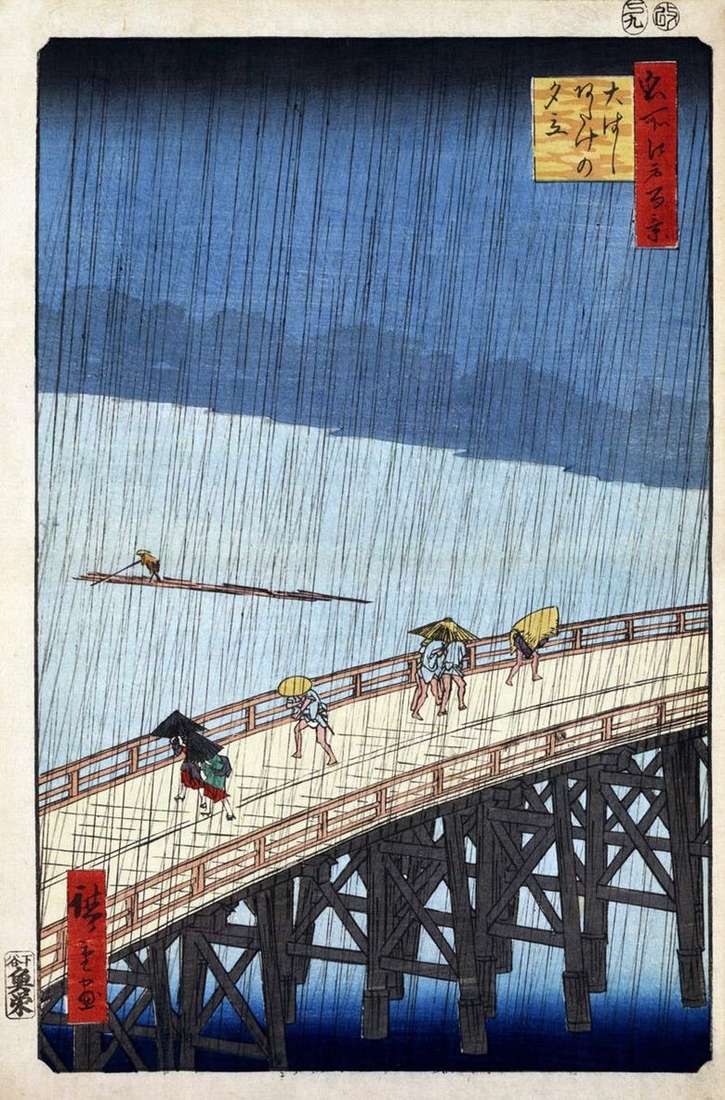
The toponym is included in the title of the engraving: Latake is a common name of the area, which is opened in the engraving of Hiroshige. This far shore became known as the Ataka named “Atake-maru,” one of the great rowing ships that appeared in the second half of the sixteenth century. The Shin-Ohashi Bridge is captured by Hiroshige in the pouring rain, which are merged in the summer.
Such a downpour is called “yudati” – “evening phenomenon / -: it is believed that it brings with it Raydzin – the god of thunder,” appearing “on the ground. At the end of the day, black clouds suddenly rush in, a hurricane wind rises. The rain does not last long, and the sky soon clears up, just like Hiroshige, who hid under broad-brimmed hats and straw hats, hurrying to find shelters caught by the storm of pedestrians.
 Rainfall over the bridge of Ohashi, Atake by Utagawa Hiroshige
Rainfall over the bridge of Ohashi, Atake by Utagawa Hiroshige Précipitations sur le pont d’Ohashi et Atake – Ando Hiroshige Terrain
Précipitations sur le pont d’Ohashi et Atake – Ando Hiroshige Terrain Precipitación sobre el puente de Ohashi y el área de captación – Ando Hiroshige
Precipitación sobre el puente de Ohashi y el área de captación – Ando Hiroshige The Ohashi Bridge in Senju by Utagawa Hiroshige
The Ohashi Bridge in Senju by Utagawa Hiroshige The Taikobashi Bridge and the Yukhinooka Hill in Meguro by Ando Hiroshige
The Taikobashi Bridge and the Yukhinooka Hill in Meguro by Ando Hiroshige The villages of Minova, Kanasugi and Mikavasima by Hiroshige Ando
The villages of Minova, Kanasugi and Mikavasima by Hiroshige Ando Averse sur le pont Ohashi, Atake Terrain
Averse sur le pont Ohashi, Atake Terrain Tormenta de lluvia sobre el puente de Ohashi, área de Atake
Tormenta de lluvia sobre el puente de Ohashi, área de Atake